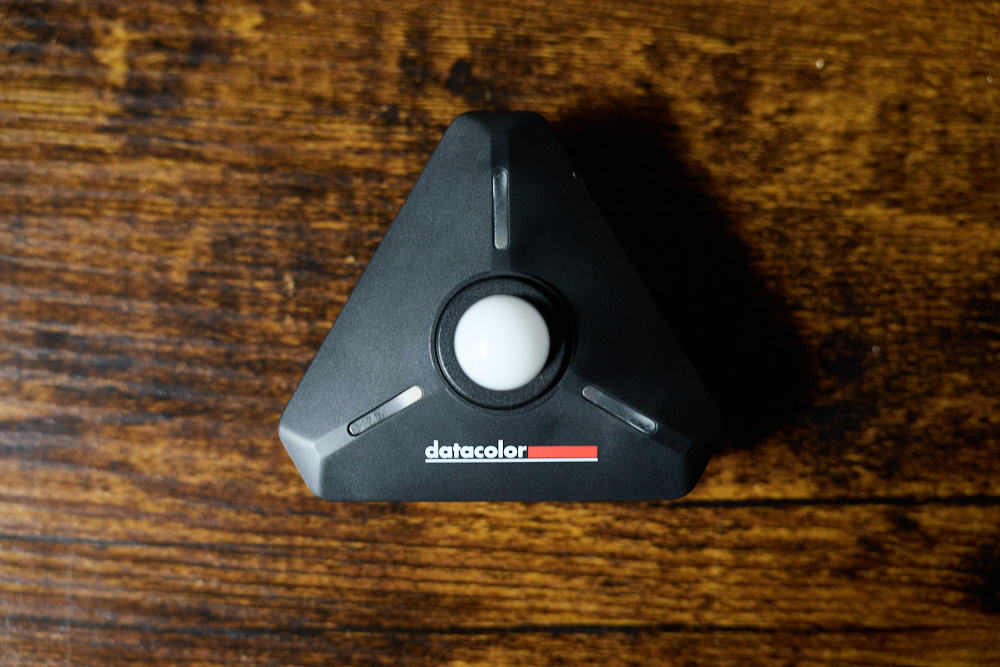A new compact color and light meter from Datacolor offers a better way to set your exposure.
Okay, I’ll admit it. I’ve gotten lazy. Back in the film days, I would diligently pull out my light meter before every take and carefully sort through my correction filters to ensure my white balance was spot on between my light source and film stock. It was all just part of the game.
But since the advent of digital cameras and raw photo and video, it has become really easy to skip that step and give in to the temptation to simply “fix it in post.” While the powers of post have no doubt significantly increased since the analog days, one adage remains true: It’s best to start with the best possible base. Regardless of what adjustments you plan to make, it’s best to input the best possible ingredients if you want to ensure a positive outcome.
It’s not that I couldn’t tell by eye if my exposure was correct. Rather, I wanted to add a bit of rigor to my exposure process to make sure I was in complete command before I ever left the set. In fact, as a professional photographer and/or filmmaker, you don’t always get to “fix it in post.” Sometimes, the last time you’re going to see your footage before the final spot airs is when it rolls out of your camera on set. You have to trust that your client or the agency will fulfill the vision. So why not give them the best possible starting point? This is where mathematical precision comes into play.

Just this morning, I was setting up a projector to show a film. If you’ve ever set up a projector, you’ll know that it can be extremely frustrating. Getting it turned on and projecting an image is easy. Making sure everything is projected perfectly straight and that your keystoning is accurate is about as fun as pulling out chin hairs one by one. If your levels are just a little off, it might not be immediately apparent to the audience, but it will certainly drive you crazy every time you look at it.
That’s kind of how white balance and tint can feel. Getting your colors right in-camera means getting your white balance and tint correct. A few degrees off, and you enter the land of chronic frustration. It’s almost right. But it’s just not… Ahhhhhh!
There are multiple ways to solve this problem. Custom white balancing your camera for each shot. Shooting color charts to ensure you are protected in post. All of these are good places to begin. If you want even more accuracy, you can invest in an expensive color meter to go along with your light meter. This should give you the most accurate reading and is a great way to go. But they can be expensive, especially if you are combining the costs of both a light meter and a color meter.

The new LightColor Meter from Datacolor comes in a small package but packs a big punch. The petite, triangular system combines a light meter and color meter into one device and interacts with an app on your phone via Bluetooth to provide accurate measurements of both the exposure of your scene and the color temperature of your light source.
It works like most meters. You begin by entering the starting variables, such as ISO and shutter angle, then hold it under the light of your scene to generate the correct aperture. Or you can alter that to gauge the result for a different variable if you prefer. You can set the device to read either flash or ambient light, making it useful for both video and photography. You can set your frame rate and even enter the strength of your ND filters to get an accurate reading. The meter also includes presets for popular color correction gels from Profoto, Lee, and Rosco to let you know which filters may be needed for a particular scene.
Best of all, in addition to giving you your exposure reading, the device also transmits to the phone the appropriate color temperature setting and potential color shifts related to tint. No more needing to always shoot in raw to protect temperature shifts or worrying about latitude in post—this device allows you to be spot on every time.

Within the app, there are a few ways to view the information. One is the exposure page, which I just described. A simple color page focuses only on color temperature and tint. A third page is dedicated to color balance, showing you the mix of red, green, and blue in your light source. A color graph page shows where your light source falls on a scale. And the final Chromaticity page graphs the color spectrum.

The kit I received, which retails for $399, comes inside a black carrying case and includes a pair of mounting options. The device itself runs on two AAA batteries.
The Datacolor LightColor Meter falls into the category of a device you don’t know you need until you have one. It’s a great tool to ensure color accuracy and provide more consistent results to your clients.







This is not a New product to the photographic world, It has been around for a number of years under the Iluminati brand. I got mine as a kick starter years ago. The packaging and accessories are the same, down to the batterie brand. The DataColor app works with the old illuminati device, the user interface has had a very nice update, something I have been looking for, for a long while. This comes in handy when you want to build a filter pack for your strobe to match ambient light.